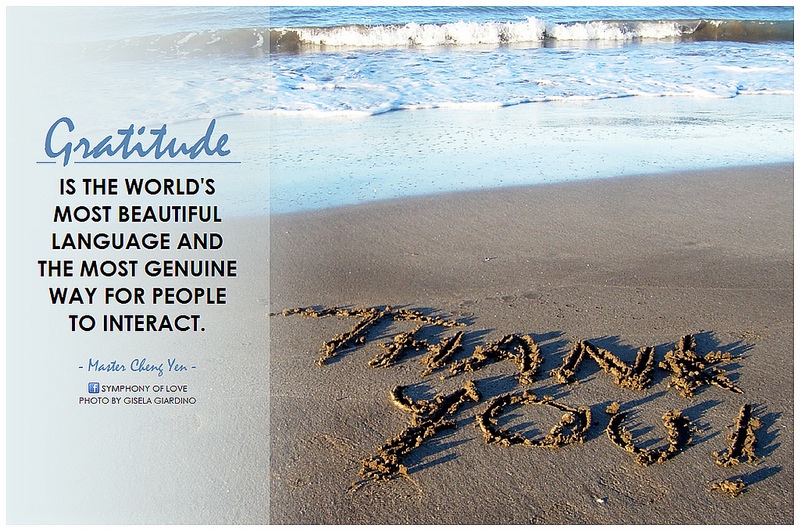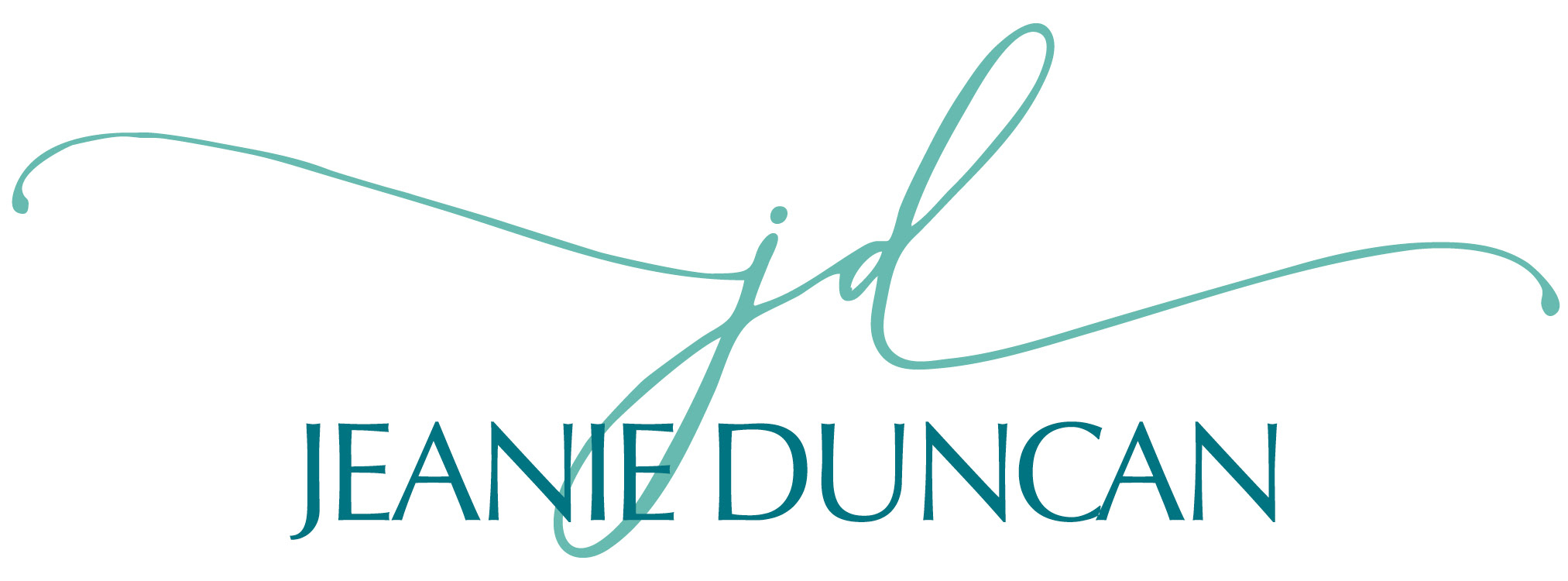
Nov 26, 2014 | Intention
 During a staff meeting one day, one of my employees passed out paper bags – the kind you packed your lunch in as a child. She sat a big box in the middle of the table and lifted the lid. Inside, it was filled with magic markers, crayons, and colored pencils. She instructed us to decorate our own personal bag in such a way that would make us smile. Everyone jumped in and began the impromptu art project.
During a staff meeting one day, one of my employees passed out paper bags – the kind you packed your lunch in as a child. She sat a big box in the middle of the table and lifted the lid. Inside, it was filled with magic markers, crayons, and colored pencils. She instructed us to decorate our own personal bag in such a way that would make us smile. Everyone jumped in and began the impromptu art project.
Next, she passed out strips of paper and asked each of us to write something we liked or appreciated about every staff member around the table, then fold it up, and drop it in our colleagues’ bags. In the coming weeks, she suggested that we keep the bags on our desks and continue writing these simple acknowledgment notes for one another. Then, whenever we need a “pick me up,” reach in, grab a handful of notes, and read them to ourselves.
I’m no longer with that organization, but the bag still sits on the desk in my office. Powerful, isn’t it?
I’m thinking about this in particular today as we get ready to celebrate Thanksgiving tomorrow. How often do we pause to say thank you and other nice things about those with whom we work? The formal feedback, like annual performance reviews, gets done, but what about the smaller things? Isn’t it really these simple things that make the biggest difference? It’s what defines a workplace’s culture – mojo I call it. And it’s a key part of building team commitment, loyalty, and satisfaction.
In all workplaces, but perhaps even more important in the nonprofit sector, we need to identify the simple, yet powerful actions and benefits that help us recruit and retain our people. After all, it’s our single greatest resource.
Even if you don’t undertake a “project” like this in your workplace, take time today to thank and acknowledge those around you. Maybe even try it with your family over Thanksgiving. Cheers to a wonderful holiday!
photo credit: symphony of love via photopin cc

Oct 14, 2014 | Coaching, Intention, Leadership

Some consider visioning to be a fluff exercise rather than an effective personal or business development strategy. After all, in both our personal and business lives, we spend the majority of our time working ‘in it’ rather than ‘on it.’ However, dedicating time to thinking about the future can be a critical investment that reaps big rewards. How do I know? I have proven it for myself and and experienced it with my clients time and time again. In fact, I have found that visioning is 100% smart business practice, helping organizations and individuals who lead them chart the course, set goals, measure progress, and learn from mistakes – all of which directly impact the bottom line.
Five years ago, I gave myself a gift: a 12-month sabbatical. I had recently left a top leadership post as an arts administrator, knowing that I had completed what I set out to do for the organization. But I didn’t quite know what would come next. I needed a little “white space” between completing a very consuming role and beginning my next venture – a little time off to engage in activities that helped me think, discover, and refill my creative well.
One day while reading The Law of Attraction by Esther and Jerry Hicks, I came across a visioning exercise called the “creative workshop.” The concept is to spend about 20 minutes each day giving thought to what you want with great clarity, describing and refining a fulfilling picture of yourself – and the life you want to live. (The idea, of course, is that you attract and create that on which you focus.)
Ultimately, that exercise led me to create a two-year vision of the most full, enriching, and satisfying life I could imagine. I then laid out specific actions I’d take to guide me toward my longer-term vision. After all, what good is a vision without a plan to get there?
What I thought initially was a simple (fluffy) exercise ended up having a profound effect. Who knew?! It was as if I had sprinkled fairy dust or Miracle Gro® on my life. Each day, I’d re-read and think about my vision and action plan. The phone started to ring, emails arrived, and certain people would simply appear in my path – everywhere from the grocery check-out line to the board room. As if I were a magnet, resources steadily came, each of which had a part to play in helping me fulfill my vision.
That was years ago. And recently, I decided to repeat this “workshop” again for myself, and I am having a similar experience – only this time, my vision seems to have expanded. And once again, I can sense the amazing personal growth beginning to happen.
“We should change our perspective from ‘I’ll believe it when I see it’ to ‘I’ll see it when I believe it.'” – Chuck Duncan
As individuals, we give so much thought and energy to our work, our co-workers, and to our family and friends that we often forget to invest in ourselves. I observed a sign on a colleague’s desk recently that read, “Me First.” While at first this might seem amusing or even appear egocentric, all of us have to remember that if we don’t first focus on ourselves, we have less to give others.
The same thing happens with organizations – visioning is often put off or lost altogether, with a team’s time and effort immersed in the day-to-day details and priorities. Yet such future-thinking exercises don’t have to be daunting undertakings; they can be incorporated into regular staff or board meetings or be integrated into a periodic planning process. I’ve used a version of this visioning exercise with clients in strategy development, sustainability planning, leadership transitions, and coaching. What I’ve found is that individuals and businesses who roll up their sleeves and take action to do it get great results and rewards.
Visioning, when accompanied by smart planning and consistent focus, can yield true transformation for you and for the organizations you work to improve. Getting started is easier than you think!
- Set aside some uninterrupted time. I suggest an hour, but a few sessions at 20 minutes each also can be effective.
- Pick a point in the future – it can be weeks, months, or years.
- Imagine a life (or business) that is vibrant and fulfilling beyond your greatest expectations.
- Give yourself permission without boundaries to dream and create.
- Describe what you’re imagining in specific, vivid detail.
- Then create an action plan to help you get there.
It may not come easily at first, but with a little time spent – perhaps over a few days/sessions – clarity and details are likely to take shape.
Once the intention is set, give attention to your new vision and plan – and enjoy what begins to manifest itself.
“You get what you think about, whether you want it or not.”
– Jerry Hicks
photo credit: Ross Manges Photography via photopin cc

Sep 29, 2014 | Career, Coaching, Leadership

I believe deeply in the value and impact of coaching. Yet in my work, I’ve discovered that many people have never had a coaching relationship and aren’t quite sure what to expect. I would like to share more about leadership coaching, possibly dispel some myths, and offer perspective about when it might be right for you.
One way I like to think of leadership coaching as similar to how an elite athlete uses a coach. A good coach helps leaders develop clarity of purpose and focus on action. The relationship is a formal engagement in which a qualified coach works with an organizational leader in a series of dynamic, confidential sessions designed to establish and achieve clear goals that result in improved effectiveness for the individual, and often for his or her team and organization.
And to better understand what coaching is, it can be helpful to briefly highlight what coaching is not:
- Counseling or therapy, which is focused on insight into history, psychological healing, pain resolution, and coping mechanisms.
- Consulting, where a consultant offers external expertise to assess, analyze, and offer technical advice or recommendations to solve a particular problem or challenge.
- Training, with the intended outcome to impart knowledge from an expert to a student where the student gains or sharpens specific skills.
Every coaching relationship is unique due to the specific situation of the person seeking coaching and the coach’s approach. However, there are some key elements you can expect with the engagement.
Contracting – This refers to everything that’s involved in setting up the actual coaching relationship and the overall process, from when and how often to meet, whether you’ll meet in-person, by phone or other virtual platforms, to fee structure and billing, and how to handle appointment scheduling and changes.
Boundaries and Confidentiality – This includes such elements as how information is handled (confidentiality and report expectations) and how the coaching relationship fits into the existing network of relationships. Information provided by the client is kept strictly confidential except as otherwise authorized in writing by the client. For example, the coach and client may agree that the goals or results of the coaching work can be reported to his/her boss or other organizational representative. Also, the coach may support the client in preparation of reports he/she makes to a boss or other stakeholder.
Mutual Role Clarity – A primary value your coach brings is helping you decide and act more effectively, not thinking or deciding for you. Your coach will be an ally, supporter, and sounding board. You can expect him/her to be direct and honest, asking powerful questions and making empowering requests that support your desired outcome. As the client, you’ll get the most from your coaching relationship if you show up engaged, willing to examine yourself – your values, beliefs, behaviors, and impact, and are open to make changes necessary to become more effective. Its important to realize that coaching is a comprehensive process that takes time and may address any area of your life, including specific career aspirations, business projects, leadership, or personal topics such as finances, health, and relationships. Even if your coaching engagement is formed in a professional work context, you bring your full self to the experience and therefore “whole life” is taken into account.
I first hired a coach when I was considering applying for a top leadership position in my organization. I wanted to pursue the opportunity and felt I needed a partner with whom to review it from all angles – someone removed from the situation, who would ask me thought-provoking questions, and help me confirm that I was the right person at the right time.
Since that first experience, I’ve hired coaches over the years and now make it a part of my ongoing personal and professional development to retain a coach. The following are some situations where a coach can be particularly helpful:
- You and your organization are experiencing significant change and transition.
- Your organization is not growing as you believe it could.
- You’re unclear on where you need or want to be in five years.
- You’re experiencing increased complexity in your role and organization.
- You seek a confidential, safe space where you can express concerns and challenges.
- You are working too hard for the results you’re getting.
- Stress is taking toll on your health and relationships.
- You’re not spending time on the most productive tasks.
- You haven’t been able to build a great team you trust and that works well together.
- You’re not enjoying your work as much as you once did.
- You struggle with whole life balance.
Using a leadership coach as a developmental partner provides a rich opportunity to learn, reflect, change, and grow. Like any relationship, it’s important to know what to expect and to co-create a constructive alliance. Through your work together, you develop the skills, behaviors, and knowledge enabling you to increase your effectiveness.
 About Jeanie Duncan: Jeanie is President of Raven Consulting Group, a business she founded that focuses on organizational change and leadership development in the nonprofit sector. She is a senior consultant for Raffa, a national firm working with nonprofit clients to lead efforts in sustainability and succession planning, executive transition and search. Additionally, Jeanie serves as adjunct faculty for the Center for Creative Leadership, a top-ranked, global provider of executive leadership education.
About Jeanie Duncan: Jeanie is President of Raven Consulting Group, a business she founded that focuses on organizational change and leadership development in the nonprofit sector. She is a senior consultant for Raffa, a national firm working with nonprofit clients to lead efforts in sustainability and succession planning, executive transition and search. Additionally, Jeanie serves as adjunct faculty for the Center for Creative Leadership, a top-ranked, global provider of executive leadership education.

Sep 16, 2014 | Intention
 Our lives are filled with high levels of pressure and complexity. We’re faced with mounting responsibility, competing priorities, and multiple deadlines, from all areas of our life – work, family, and community. Some seem to manage it all with ease, exhibiting confidence and an outward sense of calm, while others appear anxious and visibly frustrated at every turn.
Our lives are filled with high levels of pressure and complexity. We’re faced with mounting responsibility, competing priorities, and multiple deadlines, from all areas of our life – work, family, and community. Some seem to manage it all with ease, exhibiting confidence and an outward sense of calm, while others appear anxious and visibly frustrated at every turn.
So, why are some people able to handle this level of ‘turbulence’ better than others? I believe it’s resilience – a kind of ingenuity and elasticity – where we tap into our strengths and resources and spring back. And it’s not something that comes instinctively or easily, but rather it evolves with mindfulness and practice over time.
I think of organizational leaders I know as well as families, and others in relationships – if you’re not resilient, you will struggle in fast-paced, challenging, and ambiguous situations. If you’re easily stressed and irritated you won’t perform at your best, your health may decline, and your relationships will suffer. You might think of it as personal sustainability training. The better equipped you are at handling these situations and bouncing back, the better you’ll be at sustaining your energy, enthusiasm, and passion over the long-term.
There are many actions you can take to help build resiliency. Consider the following as well as ideas of your own. Get creative and have fun with it!
Mental/Emotional
– Practice mindfulness in your day-to-day life. The more we practice being in the moment, the better able we are to show up fully for whatever comes our way.
– Come up with a mantra, a brief slogan or statement of your intentions, so that you can recall it when needed.
– Keep a collection of inspiring quotes that have meaning for you. Categorize by topic and refer to them based on your situation. Here’s a good one: “The greatest glory in living lies not in never falling, but in rising every time we fall.” – Nelson Mandela.
– Listen to some of your favorite music to help shift and ignite your energy and mindset.
– Take several deep, cleansing breaths. Breathing in and out in an intentional, invigorating way can help you center, reset, and recharge.
Physical
– Take action. When you feel overwhelmed, it can help to break a large task or project down into smaller pieces and take a concrete step forward to make progress or improve the situation.
– Engage your physical strength through things like working out at a gym, going for a walk in nature, or attending a yoga class. Nothing helps me more than a long trail run in the woods – I love the smells, sounds, and physical endurance of running for an hour or more.
– If you have a meeting at work, ask your colleague(s) to go for a walking meeting. The movement helps open up thoughts and ideas.
– Pay attention to your nutrition and eating habits. Eat well to “fuel” yourself adequately for optimum performance.
– Get plenty of rest and down time. Taking a brief “time-out,” such as a long lunch or an afternoon off can offer just the reset we need. One of my favorites is visiting an art gallery in between meetings or after work.
Spiritual
– Engage in a spiritual and/or religious practice such as meditation or prayer. Taking the time to get quiet and turn your attention inward can reconnect you with what feels sacred and grounding. Sometimes I’ll steal away brief moments for a quick meditation when stuck in traffic, at a stoplight, or while waiting in line. It reframes a frustrating moment into a Zen moment. Try it sometime!
– Write down the core of your spiritual values and beliefs. Then write a spiritual reminder (a short phrase representing your beliefs, meaning, and purpose of life) that can help you recall your beliefs when facing adversity.
– Read inspirational materials as a way of taking in quick doses of positivity (check out sites like DailyOM.com and dailygood.org). I subscribe to a couple of these and enjoy reading them as I start my day.
Social
– Build a diverse and broad network including personal friends, work colleagues, faith and community connections. Reach out and engage regularly; you’ll be amazed at what transpires from the interaction.
– Make connections with other individuals and groups, such as participating in a club or small group activity.
– Boost the resiliency of someone else. Sometimes the best way to reconnect with our own strength is to support someone else with care and encouragement.
– Think of someone you know who exudes resiliency. It can help to access an example as we attempt to connect with our own inner strength. Personally, I have a couple of women business owners that I get together with frequently and seek their wisdom and insight on all kinds of issues and challenges.
– Develop your own personal ‘board of directors’ – people that positively influence and support you.
What are some of your ideas and actions for practicing resiliency?
Read other related blog posts:
10 Ways to Build Resilience
 About Jeanie Duncan: Jeanie is President of Raven Consulting Group, a business she founded that focuses on organizational change and leadership development in the nonprofit sector. She is a senior consultant for Raffa, a national firm working with nonprofit clients to lead efforts in sustainability and succession planning, executive transition and search. Additionally, Jeanie serves as adjunct faculty for the Center for Creative Leadership, a top-ranked, global provider of executive leadership education.
About Jeanie Duncan: Jeanie is President of Raven Consulting Group, a business she founded that focuses on organizational change and leadership development in the nonprofit sector. She is a senior consultant for Raffa, a national firm working with nonprofit clients to lead efforts in sustainability and succession planning, executive transition and search. Additionally, Jeanie serves as adjunct faculty for the Center for Creative Leadership, a top-ranked, global provider of executive leadership education.
photo credit: Seaweed Lady {cory} via photopin cc

Sep 2, 2014 | Intention
I remember elementary school and “field day” each year in the late spring. I looked forward to it with great anticipation. We’d have team relay races – three-legged, potato sack, egg-and-spoon – and then the best event of all…tug of war.

We’d grab the rope with our sweaty fists, grit our teeth, dig our heels in, and go to it. Tugging ferociously to and fro, sometimes the battle was quickly won and other times it seemed to go on forever until one team succumbed to the other, often getting drug to the dusty ground and across the line.
I may have liked this challenge on the playground, but it certainly is not the experience I want coming alive in my real life. Yet, sometimes it happens – mostly when I’m torn between competing priorities of work, family, community, and self. I feel “up against it” trying to manage and balance the many priorities and expectations.
Much like Elizabeth – the nonprofit executive portrayed in the attached article “Yes, You CAN Balance Work and Family Roles” – I experience the tension between consuming work responsibilities and my other life roles. This was especially true for me while serving in various leadership roles in the nonprofit sector, most recently as President & CEO of an arts council.
Early on in that position, I didn’t know any other way to be than “always on.” I thought, “If I’m not thinking about the organization, who is?” I constantly assessed, planned, strategized, and engaged my team and stakeholders. I knew the importance and necessity of being the face of the organization, a presence at local arts and cultural events during evenings and weekends, and “at the table” with other critical community leaders.
At home, I had a 4-year-old son, a spouse with an equally demanding career, and aging parents that needed my increasing attention and support. For years, I served in this complex and demanding role, often recalling the field day memories of tugging to meet all the demands while aiming for balance among my life’s personal and professional interplay.
Nearly a decade later, I completed my tenure with the organization. Between leaving that post and starting my own business, I decided to take a sabbatical. I wanted to clear my head, explore creative pursuits, and allow myself the space and time to renew my energy, be with friends and family, and shape what would come next.
During this time off, I learned that, while successful, the way in which I led was not a sustainable practice. Going forward, I committed to living a more realistic pace, adjusting my expectations of myself (and others), and more fully honoring my core values.

Courtney Welch, Inspired by Movement
For me, work-life balance is more about creating and managing flow than literally attempting to divide up and assign the number of hours in a day to the important activities of life. If something I’m doing has positive impact and gives me energy, then I have this sense of resonance and ease – regardless of the actual hours I’ve spent doing it. My life feels aligned, or “in balance.” This allows me to channel that energy into taking care of what’s important to me – both at work and outside of work.
Finding a workable approach to life is critical and can benefit your well-being, relationships, and the organization you serve. This article – “Yes, You CAN Balance Work and Family Roles” – offers five steps that can help you start today to create a more fulfilling life for yourself. We’d love to hear what’s working for you to create work-life balance.
Read other related blog posts:
I Got This! Creating a Life of Choice, Resonance, and Flow
 About Jeanie Duncan: Jeanie is President of Raven Consulting Group, a business she founded that focuses on organizational change and leadership development in the nonprofit sector. She is a senior consultant for Raffa, a national firm working with nonprofit clients to lead efforts in sustainability and succession planning, executive transition and search. Additionally, Jeanie serves as adjunct faculty for the Center for Creative Leadership, a top-ranked, global provider of executive leadership education.
About Jeanie Duncan: Jeanie is President of Raven Consulting Group, a business she founded that focuses on organizational change and leadership development in the nonprofit sector. She is a senior consultant for Raffa, a national firm working with nonprofit clients to lead efforts in sustainability and succession planning, executive transition and search. Additionally, Jeanie serves as adjunct faculty for the Center for Creative Leadership, a top-ranked, global provider of executive leadership education.

 During a staff meeting one day, one of my employees passed out paper bags – the kind you packed your lunch in as a child. She sat a big box in the middle of the table and lifted the lid. Inside, it was filled with magic markers, crayons, and colored pencils. She instructed us to decorate our own personal bag in such a way that would make us smile. Everyone jumped in and began the impromptu art project.
During a staff meeting one day, one of my employees passed out paper bags – the kind you packed your lunch in as a child. She sat a big box in the middle of the table and lifted the lid. Inside, it was filled with magic markers, crayons, and colored pencils. She instructed us to decorate our own personal bag in such a way that would make us smile. Everyone jumped in and began the impromptu art project.









